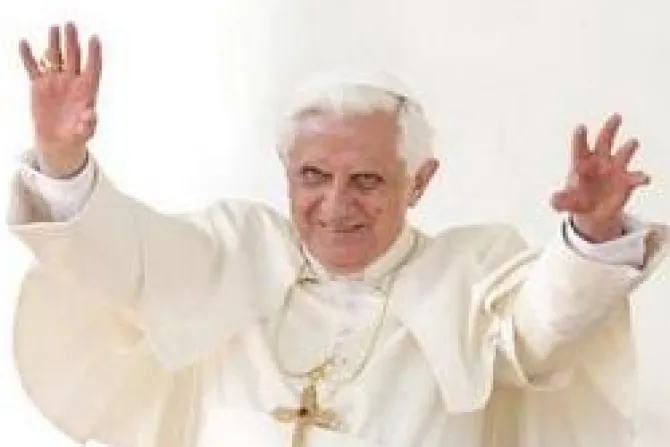Vatican City, Jun 27, 2007 / 09:09 am
The Holy Father, Pope Benedict XVI, greeted the thousands of pilgrims gathered in the Vatican’s Paul VI auditorium this morning, continuing his cycle of catechesis on the Church Fathers by commenting on a master of catechisis himself - St. Cyril of Jerusalem.
Cyril, the Pope explained, was consecrated a bishop in 348 by Acacius, metropolitan of Caesarea in Palestine and a supporter of Arianism. However, soon afterwards the two men came into contrast, "not only in the doctrinal field, but also in the area of jurisprudence, because Cyril claimed the autonomy of his see from the metropolitan see of Caesarea." He was exiled thee times and only in 378, following the death of the emperor Valens, could Cyril return to his see, "restoring unity and peace among the faithful." Of this saint we have his "Catecheses," 24 catechetical lectures introduced by a prologue.
Cyril was known for his Catechesis, which, the Holy Father said, “prepared the catechumens of the Church of Jerusalem first to receive the sacraments of Christian initiation, and then, after their Baptism, to understand more deeply the Church’s faith as expressed in the sacred mysteries.”
Cyril's Catechesis treated the topics of the sacraments, especially Baptism, Confirmation and the Eucharist. In parallel manner, Cyril developed alongside these catecheses another on the Our Father, “creating a way of initiation into prayer.”
Benedict highlighted the importance of catechesis for initiation into the faith: “The catecheses were an important moment, inserted into the ample context of the lives, and in particular the liturgy, of the Christian community, in whose maternal womb the future faithful were being gestated, accompanied by prayer and the testimony of the brothers.”
The effect of catechesis was both to teach doctrine and instruct in the moral life; the doctrine “descended progressively into their souls, which were solicitous to transform their pagan forms of behavior into the manner of acting proper to the new life in Christ, the gift of Baptism.”
When the catechumens reached Baptism, Cyril instructed them with his Mystagogical Catechesis, “the apex” of his instruction, the Holy Father noted. “Illuminated by the light of a more profound faith, as a result of Baptism, the neophytes were finally ready to understand them better,” he said
Speaking of the death to sin and the rebirth in God which occurs in Baptism, Cyril told his catechumens: “For you...the time to die coincided with the time to be born: one and the same moment has effected both events.”
Benedict noted the ongoing value of this text: “the Catecheses remain a model for instruction today, leading the whole person – body, soul, and spirit – to a living experience of Christ’s gift of salvation.”


